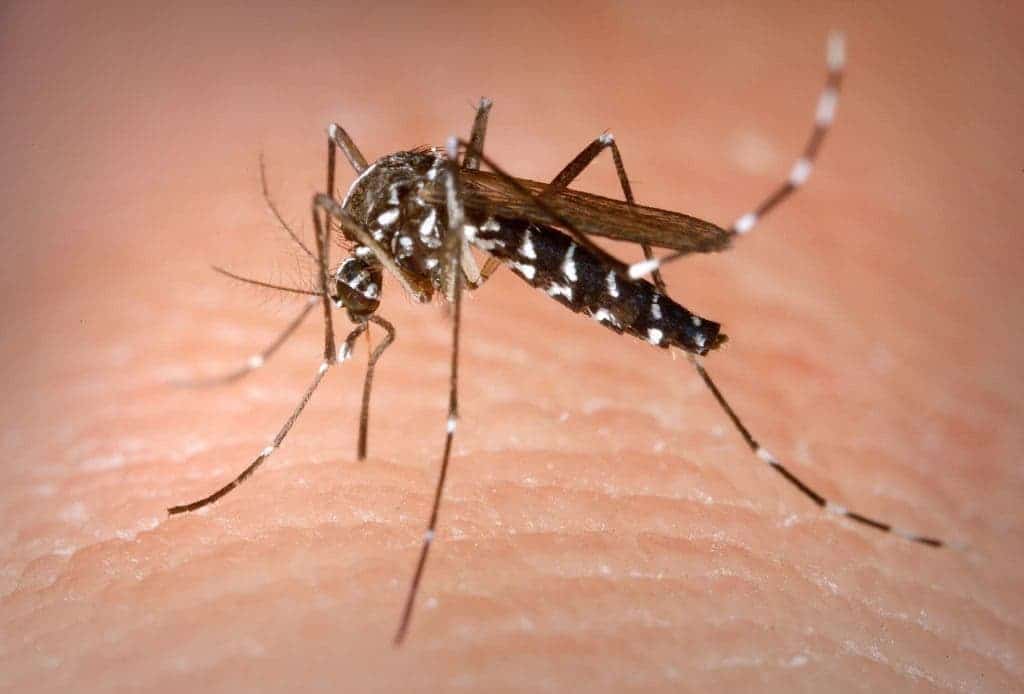
Researchers affiliated with the World Mosquito Program, a non-profit concerned with protecting communities across the world from mosquito-borne diseases, just reported that its most recent trial meant to cull dengue in Indonesia was a stunning success. After releasing treated mosquitoes that were infected with a bacteria that makes them sterile, over the course of three years the number of dengue cases plummeted by nearly 77% while the number of dengue hospitalizations dropped by 86%.
The Wolbachia method
Dengue is a brutal mosquito-borne disease that causes flu-like symptoms but can be lethal and kill up to 20% of those with severe dengue. In the last five decades, dengue has gone from being present in a handful of countries to being endemic in 128 countries, where about four billion people live. In this timeframe, the number of dengue cases has increased 30-fold. As a result, the World Health Organization (WHO) listed dengue as one of the top global health threats in 2019 alongside Ebola, global flu pandemic, HIV, antimicrobial resistance and many others.
There is no specific treatment for dengue fever. For severe dengue, medical care by physicians and nurses experienced with the effects and progression of the disease can save lives – decreasing mortality rates from more than 20% to less than 1%. Maintenance of the patient’s body fluid volume is particularly critical to severe dengue care.
Dengue is transmitted by Aedes aegypti mosquitoes, which are responsible for a number of other illnesses including Zika and chikungunya. It is difficult to control or eliminate Ae. aegypti mosquitoes because they are highly resilient and can rapidly bounce back to initial numbers after disturbances such as droughts or human interventions. Their eggs can withstand desiccation (drying) and survive without water for several months on the inner walls of containers. But they may have finally met their match — the Wolbachia method.
Only female mosquitoes bite humans, which means that only females can transmit viruses. When mosquitoes are infected with the Wolbachia bacterium — a microbe present in at least 60% of all insects but rarely found in mosquitoes — two things happen. For starters, it makes most male mosquitoes sterile. Secondly, the bacteria are transmitted to offspring only by females.
Once a mosquito is infected with the bacterium, it makes it harder for viruses such as dengue to reproduce inside the insects, making the transmission from person to person far less likely. Because the effect of Wolbachia infection on insect reproduction favors the survival of Wolbachia-infected females over uninfected females, Wolbachia can rapidly spread through an insect population.
Wolbachia is harmless to humans. The benefits are that this is a non-chemical approach and that other insects and mosquitoes are not harmed.
Manipulating mosquitoes to stop spreading dengue with some help from bacteria
In 2017, researchers with the World Mosquito Program partnered with the Tahija Foundation and Gadjah Mada University and released Wolbachia mosquitoes within a 26km2 area of Yogyakarta City, Indonesia. The site was subdivided into 24 clusters, 12 of which were randomly selected to house Wolbachia mosquitoes, while the other dozen clusters were left untreated to act as a control.
Now, the team has reported the results of the trial in the New England Journal of Medicine, showing that Wolbachia deployments reduced dengue incidence by 77% and dengue hospitalisations by 86%.
Over the course of the trial, 318 dengue cases were detected in the untreated areas and only 67 in the Wolbachia-treated areas. There were only 13 hospitalizations for dengue in the Wolbachia-treated area compared to 102 in the untreated area.

According to the researchers, once Wolbachia is established, it remains at a very high level in the mosquito population. The release of the Wolbachia mosquitoes was done transparently with the support of the local population.
Households voluntarily hosted these mosquito release containers, to which Wolbachia-carrying mosquito eggs, water and fish food were added once every two weeks, for 4-6 months. Adult Wolbachia-carrying mosquitoes emerged from the containers, then bred with wild-type Ae. aegypti mosquitoes until almost all Ae. aegypti in the intervention areas carried Wolbachia.
“In Yogyakarta, everybody knows somebody who has been impacted by dengue. Dengue is present in all provinces of Indonesia and is endemic in many large cities and small towns. The results of the RCT is welcome news for the people of Yogyakarta and a major breakthrough for the World Mosquito Program’s ambition to protect the wider Indonesian population,” reads a statement by the World Mosquito Program.
These results are consistent with those from other trials performed in Australia and Brazil, giving confidence that the reduction in dengue incidence can be replicated using the Wolbachia method in other parts of the globe. However, this needs to be thoroughly tested since differences in the circulating dengue serotypes can influence the results of the intervention.






